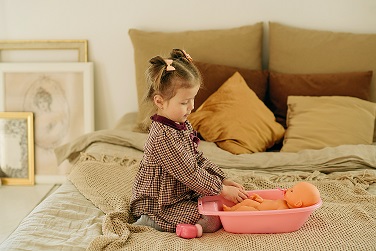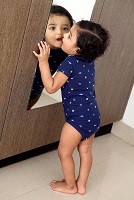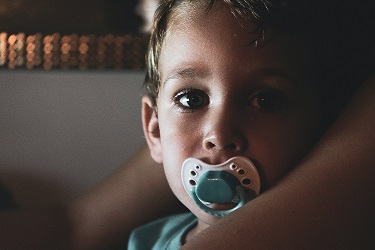Whether it’s a baby doll or your baby’s favorite stuffed animal, pretending to take care of it can be a great way to teach speech and language skills. As I have stated in previous posts, pretend play is important for many developmental skills. It also can give your child a sense of playing an important role within the family. It’s a great way to prepare your kiddo for becoming a big brother/sister!
Before the age of 2, you will see your child engaging in some independent pretend play. They may begin to imitate some everyday routines they see parents/caregivers doing, such as wiping up the table or try on their highchair or booster seat. Similarly, they may pretend to feed dolls or stuffed animals, wash them, change their diaper, or dress/undress them. Much the same as these consistent routines YOU are helping them with! If you do not see your child engaging in this type of play, you can demonstrate it for them. If they are playing in their play kitchen, show them to pretend to give the doll or stuffed animal a drink. Model sounds/words/word combinations to “talk” for the toy. For example, “Milk please.”, “Thank you.”, make a sipping sound, then “ahhhhh” or “mmmm, yummy!”. Pretend to give the doll or stuffed animal a bath and narrate what you are doing. “Time to get a bath!”, “Wash, wash, wash”, or talk about what you’re washing to work on labeling body parts. For example, “Wash toes!”, etc. Then you can incorporate transitioning the baby from getting a bath to getting dry and dressed. You can model “We need a towel”, “Dry, dry, dry”, then “All done!”, “Pajamas on”, “Feet in”, “Arms in”, etc. In addition, you can expand this further to a bed time routine and they can help you put the baby to bed. Model “Night-night baby” and give your child directions to “Give the baby a blanket” or “Give baby a kiss”, etc(then make the kissing sound).
These activities can help build your child’s vocabulary, ability to make sounds, and turn taking skills with you. It may even help with some of these routines if they give you a hard time getting through it without a meltdown. Pretending to take care of a favorite toy builds their speech and language development, pretend play skills, social skills, and so much more!
Sounds/words to include: baby, eat, sit, drink, wash, water, milk, juice, names of foods, soap, bubbles, pop, body parts, names of clothing, night-night, all clean, all done, on, off, be, blanket, shhhhh, ahhhhhh, mmmmmmm, yum/yummy, etc.



